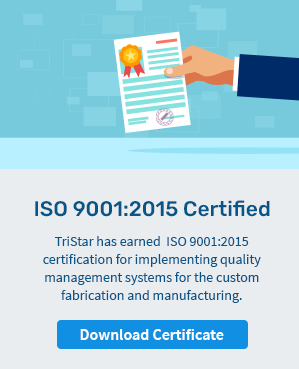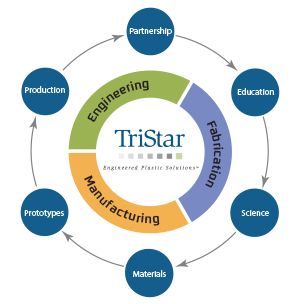
How TriStar Helped Extend the Life of the C-5 Galaxy
Over the years, TriStar has been privileged to work with the U.S. military on a variety of high-profile projects. Today, we look back at our involvement in the C-5 Galaxy C-5M project, and the work we undertook to engineer a critical seal for the mid-wing joint, helping to ensure that this mission-critical aircraft will continue in service into the 2040s.
First, A Quick History Lesson

In 1968, the first C-5A Galaxy Transport rolled out of Lockheed’s hangar, marking the beginning of a challenging journey for this massive aircraft. The program faced numerous obstacles, including cost overruns, technical difficulties, and financial troubles that nearly halted its progress. The 223-foot wingspan, one of the C-5A’s most impressive features, proved to be a significant technical challenge, with early tests revealing cracks during fatigue testing.
In 1971, the program was on the verge of collapse, but an unexpected lifeline came from the then-friendly Iranian government, which offered to fund a restart to purchase C-5As alongside their F14s. This deal fell through in 1979 with the Iranian revolution, but the C-5 program was revived by President Reagan, who recognized the strategic importance of the aircraft and ensured it received the necessary funding. Ultimately, 131 C-5A and B versions were completed, and the U.S. fleet still operates 52 upgraded versions.
The C5M Program – A C-5 Galaxy for the 21st Century
The C-5M program, initiated in the early 2000s, aimed to significantly upgrade the fleet with enhancements to engines, radar, communications, maintenance, and structural integrity. One of the critical structural issues involved the C-5 wing’s mid-wing joint, a bolted spar system. The original design included a syntactic foam insulation that prevented rust and corrosion, a vital component to the wing's longevity. However, when the modification program began, it was discovered that the original foam supplier was no longer in business, necessitating a new solution. The Air Force was hesitant to use another foam product, so an engineering firm contracted by the Air Force approached TriStar to collaboratively develop a new material.
Engineering a New Seal from Cutting Edge Materials
The engineering challenge was to create a bondable elastomer seal that could protect the mid-wing joint, meet temperature requirements, resist abrasion from debris, and remain flexible to accommodate joint movement during flight. This seal, which was 8-12 inches wide and bonded in sections across the wing surface, had to also ensure moisture was kept out while retaining anti-corrosion lubricants inside the wing. After months of evaluation and testing with the engineering firm, a design was finalized and submitted to the Air Force, which approved the purchase of 12 ship sets for trials. These trials were a success, and the new seal became a critical component in extending the C-5's operational life.
Put TriStar’s Extensive Engineering and Materials Knowledge to Work for You
Although this project did not involve one of our Tier One products, our engineering team's broad expertise in materials and production processes led to the successful development of this unique “flying wing seal.” This and other modifications will help keep the C5 in the U.S. arsenal until the 2040s, ensuring that, alongside the C-17, the United States maintains the world’s premier fast-response military airlift capability. TriStar is proud to have contributed to this essential program. As always, we encourage you to reach out if you have an engineering challenge we can help with.








